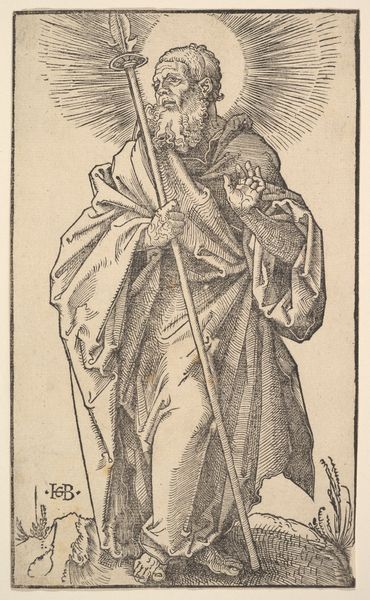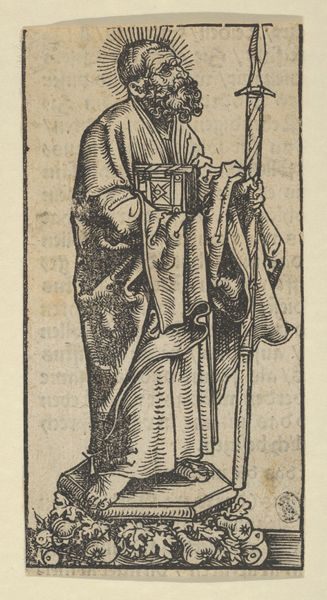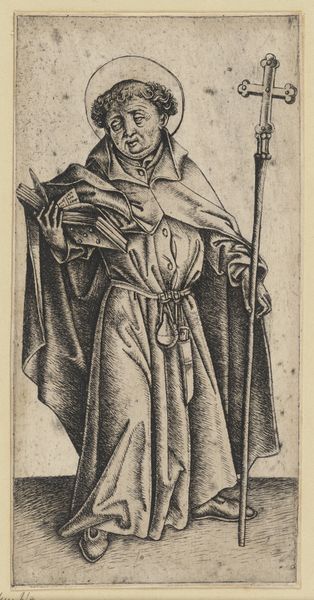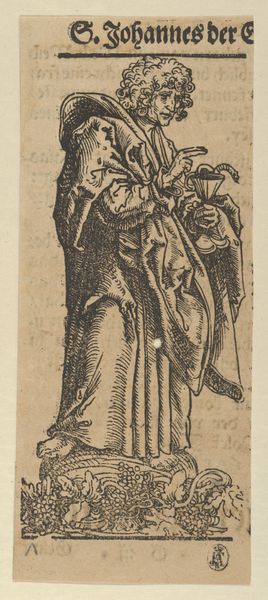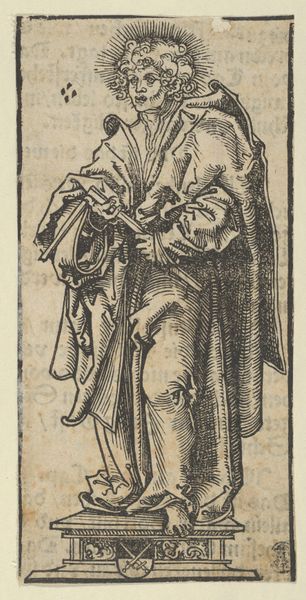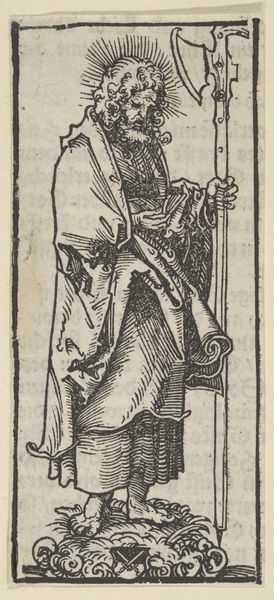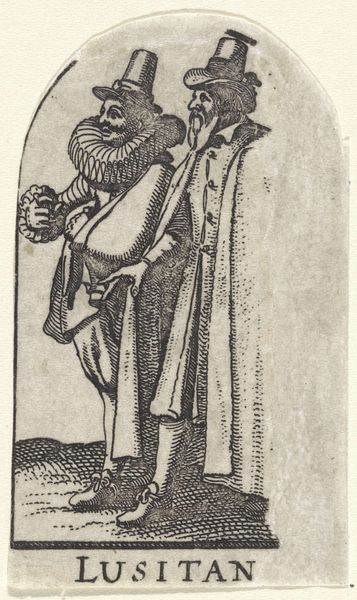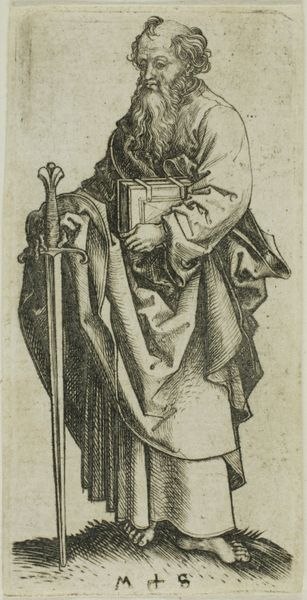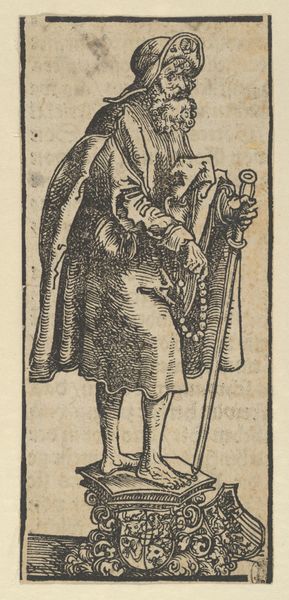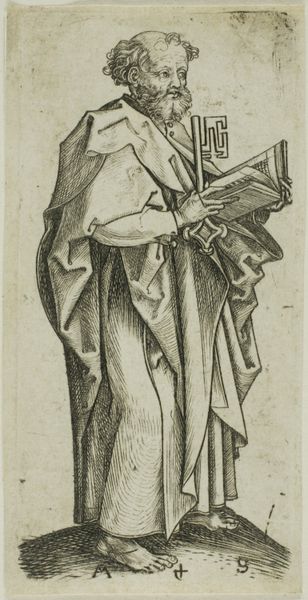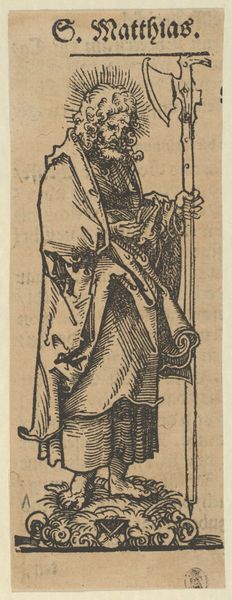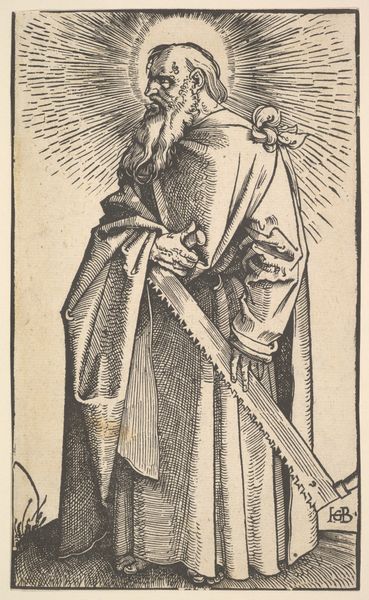
Silver Statuette of St. Andrew, from the Wittenberg Reliquaries 1472 - 1553
0:00
0:00
print, woodcut, engraving
# print
#
figuration
#
woodcut
#
northern-renaissance
#
engraving
Dimensions: Sheet: 5 3/16 × 2 3/4 in. (13.1 × 7 cm)
Copyright: Public Domain
This woodcut of St. Andrew, made by Lucas Cranach the Elder, was originally intended to adorn a silver statuette as part of the Wittenberg Reliquaries. Cranach, working in 16th century Germany, presents Andrew, the patron saint of Scotland, with his iconic saltire cross. The image is loaded with cultural meaning. Andrew stands triumphantly over a defeated dragon, symbolizing the victory of Christianity over evil. These reliquaries, commissioned by Frederick the Wise, Elector of Saxony, were not merely devotional objects, but also potent symbols of political and religious authority. Frederick was a collector of relics, and his association with them gave him prestige and power within the Holy Roman Empire. By the time this woodcut was made, Wittenberg was the epicentre of the Protestant Reformation, and Frederick the Wise had become Martin Luther's protector. It's worth considering how an image like this might have been viewed in such a climate of religious and political upheaval. To fully understand this print, we can examine inventories of Frederick's collection, religious treatises of the time, and biographies of Cranach and his circle. Only then can we start to appreciate the complex interplay of art, religion, and power in the Reformation era.
Comments
No comments
Be the first to comment and join the conversation on the ultimate creative platform.
